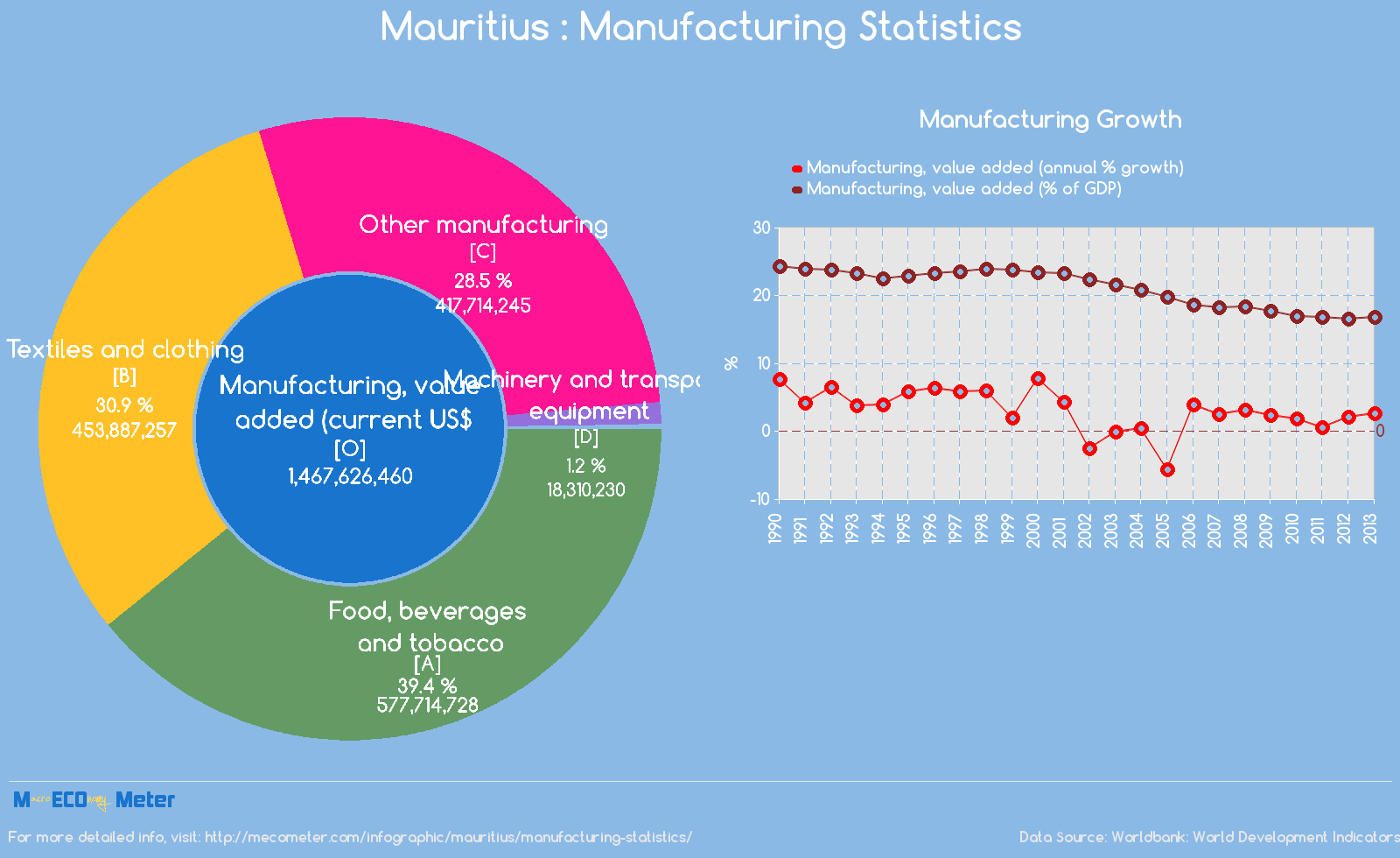Located off the southeast coast of Africa, neighboring the French island of La Reunion, Mauritius is an island state of 1.3 million inhabitants. The country’s economy has made great strides since independence in 1968, and Mauritius is now an upper middle-income economy. Key challenges include tackling inequality, which remains at moderate levels but is increasing, and adapting to the impacts of climate change.
Political context
Mauritius is a stable, multiparty, parliamentary democracy. Shifting coalitions are a feature of politics. The president is head of state and the prime minister has full executive powers and heads the government. Legislative elections held in December 2014 were won by the Alliance Lepep, a coalition comprising the Militant Socialist Movement (MSM), the Mauritian Social Democrat Party (PMSD), and the Liberation Movement. The coalition secured a comfortable parliamentary majority with 53 out of 69 seats. The MSM founder, Anerood Jugnauth, become Prime Minister (PM).
In January of 2017, following the resignation of then-PM Jugnauth (86), the Finance Minister, Pravind Jugnauth (son of Anerood), became Prime Minister in accordance with a constitutional rule that states the leader of the largest party in parliament succeeds. The new PM reshuffled the Cabinet but retained the Finance portfolio. The government is about halfway through its expected term with the next elections due by the end of 2019. The President of Mauritius, appointed in 2015, resigned following allegations of financial impropriety. It was alleged she made personal purchases with a credit card provided by an NGO whose founder is under investigation for alleged fraud in Portugal. Her role mostly ceremonial, Gurib-Fakim, 58, said she was a victim of a smear campaign before presenting her resignation.
Recent economic developments
Real GDP growth reached a robust 4 per cent in 2017. The main drivers of growth were the services sector, especially finance, and the trade and accommodation services. The latter benefited from a buoyant tourism sector, a key sector supported by the recent acceleration in the global economy. Tourist arrivals increased by 5.2 per cent in 2017 to reach 1.34 million – a number equivalent to the island’s entire resident population.
The inflation rate picked up to 6.9 per cent in February 2018, compared to 1.3 per cent a year earlier. The main price increases affected vegetable products as local supply was hit by bad weather. However, the central bank’s core inflation measure, excluding more volatile items (such as food), remained under control at 2.9 per cent in January 2018.
Fiscal policy has been stable with an overall budget balance of -3.2 per cent of GDP planned for the current fiscal year, which ends in June. If achieved, this would be a small reduction from the 3.5% of GDP budget deficit outturn of FY 2017-18. Public sector debt levels are substantial, at approximately 56 per cent of GDP (by the domestic statutory definition).
Mauritius’s external balances continued to be supported by abundant financial and capital inflows, including net inflows to the large offshore corporate sector. Thus, although the current account deficit was a sizable 5.9 per cent of GDP in Q3 2017 (slightly narrower than a year earlier), the overall balance of payments remained moderately in surplus, and gross international reserves rose to $ 6.1 billion in January 2018 (equivalent to over 10 months of imports).
Outlook
The baseline scenario is for economic conditions to remain buoyant on the back of favorable external conditions and the pick-up in public investment, notably Mauritius’s sizable road decongestion program. Economic growth is projected to remain in the 3.5-4.0 per cent range, broadly consistent with the estimated pace of potential growth in output. Growth could even accelerate if the government’s ambitious public infrastructure program gathers pace and stimulates more private investment.
The economy’s external financing position should benefit from continued strength in services exports (mainly tourism) and brighter prospects for goods exports due to stronger economic growth in Mauritius’s key trading partners.
Development challenges
Absolute poverty levels in Mauritius are low. Having overcome extreme poverty, Mauritius’s key development challenge is to foster more inclusive growth and boost shared prosperity. While inequality in household consumption was stable between 2007 and 2012 (with the Gini index at about 36), income-based inequality, particularly income from labor, has increased rapidly.
Mauritius’s relatively large offshore financial sector is grappling with the need to adapt to a fast-changing global regulatory environment, and there are ambitious plans under development to re-position Mauritius as a regional financial hub. Future developments in the sector are critical to the overall economic outlook for Mauritius as it contributes significantly to jobs and income, and to the country’s external financing position.
Over the long term, Mauritius faces the challenge of sustaining its model of historically inclusive growth as it progresses toward its government’s goal of becoming a high-income economy by the 2020s. As a small island country with a narrow domestic skills’ base and an aging population, the realization of this ambition will hinge on improving the education system and addressing current constraints to labor participation and productivity.
Strengthening the role of, and opportunities for, women in the economy could significantly help since, despite relatively strong female educational attainment, the female participation rate in the labor market is low (32 per cent lower than men in 2015) and the gender wage gap remains large at about 30 per cent in the private sector.
(Courtesy www.worldbank.org)






